The Reading Chair: Summer 2024
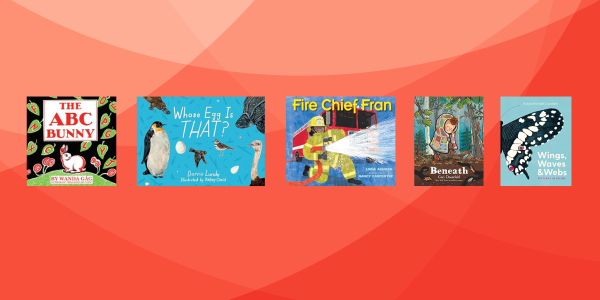
You are here
Children’s books feature a unique marriage of text and illustrations in conversation with each other. In books that are authored by one person and illustrated by another, the text is often written first and serves as an invitation for the illustrator. This edition of The Reading Chair showcases a wide variety of illustration styles that can be successful—when done well—in children’s books.
Illustrations in The ABC Bunny use lighting and the direction of ink strokes to guide the viewer’s eye. They are a striking example of the effectiveness of good black-and-white illustrations, in which information and emotion are conveyed without color. Whose Egg Is That? makes use of negative (or blank) space to create dramatic effects and heighten the power of the ink on the page. In Fire Chief Fran, the paint and digital media illustrations capture the facial expressions and physical energy of the characters, bringing the story to life. Bold, uncluttered illustrations tend to make for the best group read alouds. But in Beneath, the illustrations are full of details. This works well because focal points, conveyed with color and lighting, guide the eye through a clear story within each illustration. In Wings, Waves & Webs, bold colors and negative space help readers make sense of the patterns shown, supporting the purpose of the book.
We hope exploring these books leads you to others with illustrations that are similarly engaging for the children in your setting.
—Isabel Baker and Miriam Baker Schiffer
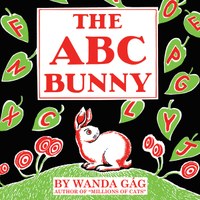 The ABC Bunny
The ABC Bunny
By Wanda Gág. 2022 (1934).
Minneapolis: University of Minnesota Press. 30 pp. Ages 1 to 6.
Famed author and illustrator Wanda Gág created the first major American picture book, Millions of Cats, and while she didn’t publish many books for children, they’ve certainly endured. She is also known for The ABC Bunny, an alphabet book first published in 1934 and newly available in a board book edition that we’re excited to share. It’s the story of one bunny’s long and adventurous journey to Elsewhere and back to Bunny Town, during which he encounters fascinating creatures and situations, such as the quail lined up on a rail. Gág presents one or two letters of the alphabet per page, pairing them with familiar words (apple, frog, rain) and words not usually found in an alphabet book (elsewhere, jaunty, bookish). The text features rhyme (crash and dash; gale and hail) and alliteration (“napping in a nook”). The mesmerizing black-and-white illustrations are richly expressive.
Young readers will want to browse the pictures and study the objects and characters all on their own; the board pages will stand up to that well. This magnificent book offers an easy way to introduce children to the alphabet, with rhyme and familiar objects and movement.
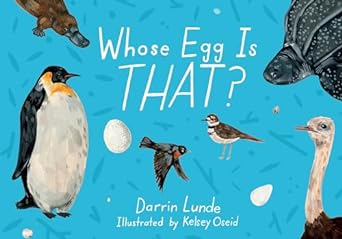 Whose Egg Is That?
Whose Egg Is That?
By Darrin Lunde. Illus. by Kelsey Oseid. 2023.
Watertown, MA: Charlesbridge. 32 pp. Ages 2 to 6.
Children will join right in for this interactive study of animals who lay eggs. The book presents eggs ranging from the killdeer’s spotted egg and the leatherback sea turtle’s egg buried in the sand to a fossil of a dinosaur egg. Readers will enjoy learning about their varied shells, such as the soft and rubbery platypus egg. Text explains how shells are adapted to different habitats, such as the blue of a robin’s egg that protects the chick from sunlight. Illustrations are beautiful yet simple, with great use of negative space. We love that each egg is life-sized. Back matter presents additional “eggcellent egg facts.”
This book lends itself well to extension activities, such as using paper cutouts or rocks of different sizes—and perhaps some grocery store eggs for comparison—to bring the eggs off the page and into your setting. An excellent science title for preschoolers!
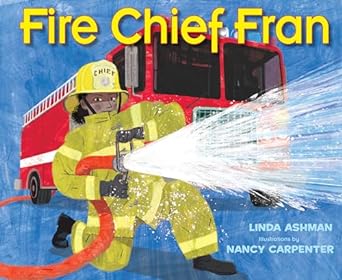 Fire Chief Fran
Fire Chief Fran
By Linda Ashman. Illus. by Nancy Carpenter. 2022.
New York: Astra Young Readers. 32 pp. Ages 2 to 6.
Firefighter books have broad appeal for children. With flashing lights and drama, what’s not to like? But skilled author and illustrator team Ashman and Carpenter take this one to the next level. The book follows Fire Chief Fran and her crew as they juggle emergencies big and small with the more ordinary parts of their day, including training, sharing meals, and educating children who visit the firehouse. The story starts with a sweet puppy, grateful for a rescue, and works its way up to a full-blown fire. Ashman’s rhyme, which she is known for, carries the story from episode to episode with a sense of urgency, keeping the reader’s attention. Carpenter’s colorful and compelling illustrations capture the physical demands of the job and the skills of the firefighters performing it. The back matter is full of interesting facts about firefighters.
Teachers can use this book for extension activities about helpers in their communities and to start conversations about teamwork.
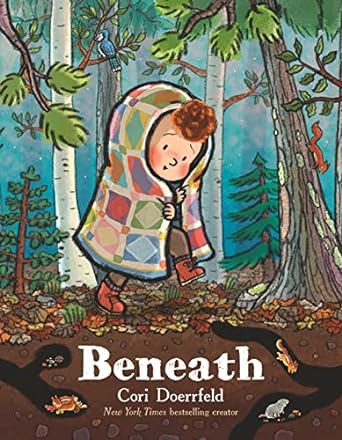 Beneath
Beneath
By Cori Doerrfeld. 2023.
New York: Little Brown. 40 pp. Ages 3 to 7.
Grandpa asks about Finn’s horrible mood, but Finn doesn’t want to talk about it. Reluctantly, Finn agrees to go for a walk instead, staying covered head-to-toe in a blanket. Grandpa leads Finn on a nature walk and talks about all the things a person can’t see: the roots beneath the trees; the fish beneath a boat; the plants sprouting beneath fallen leaves. Finn finds this intriguing, and the blanket slowly drops. Soon Grandpa and Finn connect the idea to people, who also have more going on beneath than meets the eye, whether pain or love or understanding. Finn feels much better after that, knowing Grandpa understands. The text is light enough to keep this book of sophisticated ideas moving along smoothly. Doerrfeld’s illustrations of the rich life beneath the natural world are lush and fascinating. She pays close attention to illustrating the humans too.
This book will inspire children to think about layers in their natural surroundings and even the layers of their favorite fruits and vegetables. It can also be a starting point for a conversation about feelings.
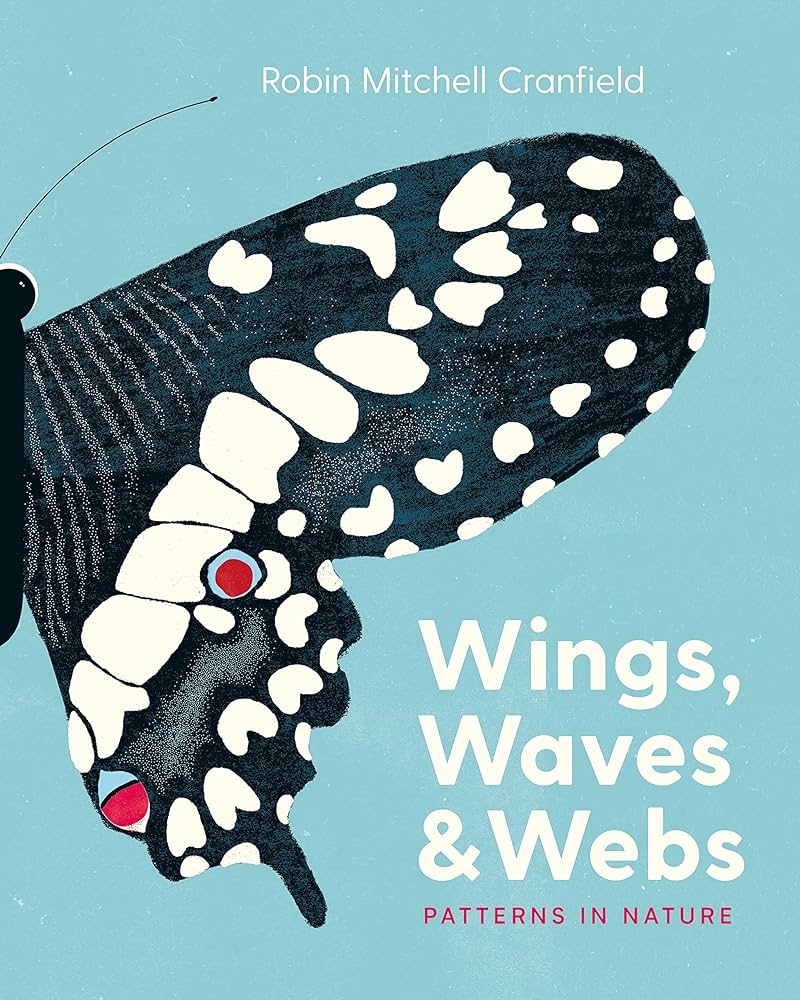 Wings, Waves & Webs: Patterns in Nature
Wings, Waves & Webs: Patterns in Nature
By Robin Mitchell Cranfield. 2023.
Vancouver: Greystone Kids. 36 pp. Ages 3 to 8.
Spirals, stripes, radial symmetry, meanders, and honeycombs: these patterns and more are all here, ready for children to examine. This fascinating book shows how all kinds of patterns appear throughout nature (on snails, in ice crystals, across eggshells) and how they help a variety of animals achieve their goals and survive, whether that means growing, communicating, or moving as a collective. Cranfield’s illustrations are appealing and clear, sophisticated for older readers yet simple enough for younger ones.
Educators can take children on a nature walk or a walk inside their setting and ask them to identify the patterns mentioned in the book. The book can also be a jumping-off point for discussions about how patterns help us understand our surroundings and make predictions. Patterns also have applications far beyond the physical world. Teachers can help children notice patterns in everyday routines and social interactions—such as learning and repeating successful conversation strategies—and in content areas like math and literacy.
Copyright © 2024 by the National Association for the Education of Young Children. See Permissions and Reprints online at NAEYC.org/resources/permissions.
Isabel Baker, MAT, MLS, is the founding director of The Book Vine for Children, a national company dedicated to getting good books into the hands of preschool children and their teachers. Isabel has worked as a children’s librarian and is currently a presenter on early literacy and book selection.
Miriam Baker Schiffer, MFA, is a writer in Brooklyn, New York. She consults on book selections for The Book Vine, in McHenry, Illinois. Miriam’s children’s book, Stella Brings the Family, was published by Chronicle Books in 2015.